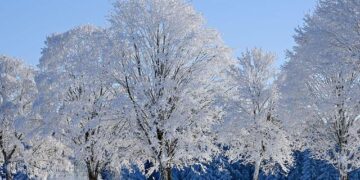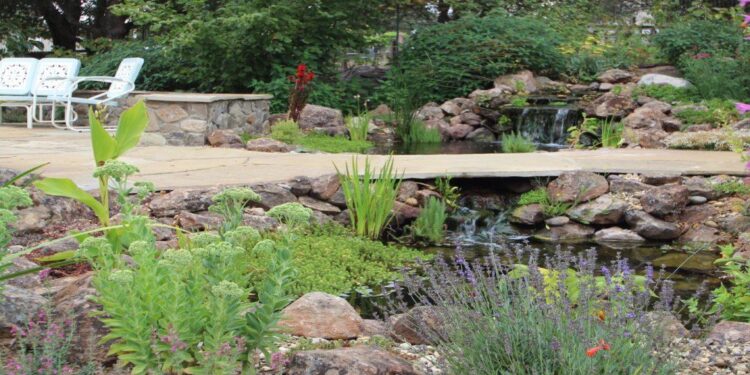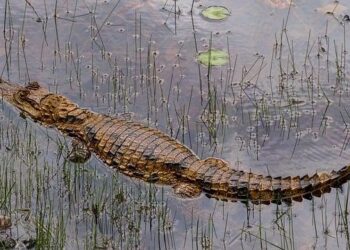Embracing Ecological Landscaping: The Vision of Kelly Norris
As global awareness of environmental impact grows, the urgency for sustainable landscaping practices has reached new heights. At the forefront of this movement is Kelly Norris, an innovative ecological landscaper whose work embodies a revolutionary approach to gardening that emphasizes “designing for abundance.” By employing creative methods and a profound knowledge of local ecosystems, Norris is reshaping our relationship with outdoor spaces, creating vibrant environments that not only flourish but also enhance biodiversity. This article delves into Norris’s philosophy, his pioneering projects, and how his vision can motivate a new wave of gardeners to nurture resilience and sustainability in the face of climate change challenges. Join us as we investigate the principles behind abundant design and uncover ways they can foster a more harmonious relationship with nature.
Kelly Norris and the Essence of Ecological Design
A trailblazer in ecological design, Kelly Norris advocates for landscapes that thrive on biodiversity while fulfilling practical needs. His comprehensive approach revolves around several core principles aimed at cultivating resilient ecosystems. By working in harmony with nature, he highlights the significance of utilizing indigenous plants, which are well-suited to local conditions—thereby minimizing reliance on artificial fertilizers and excessive watering. This strategy not only promotes sustainability but also supports local wildlife by providing vital habitats and food sources.
Norris further encourages designing spaces that promote interaction with nature. Incorporating elements like wildlife gardens, varied water features, and multi-layered planting designs transforms landscapes into bustling centers teeming with life. Below is a summary table showcasing key design components that enhance ecological diversity:
| Design Component | Functionality |
|---|---|
| Indigenous Plants | Nurture biodiversity while reducing upkeep requirements. |
| Wildlife Pathways | Eases safe movement for animals across various terrains. |
| Sustainable Gardens (Rain Gardens) | Mange stormwater runoff effectively while enhancing soil quality. |
| Diverse Plant Pairings (Companion Planting) | PROMOTE GROWTH AND YIELD OF ADJACENT PLANTS. |
Native Plants: Cultivating Biodiversity in Your Garden Spaces
The foundation for creating resilient gardens lies in selecting native plants adapted to local ecosystems. These species not only add vibrant colors and textures but are essential for supporting regional wildlife populations. A diverse array of native flora attracts crucial pollinators like bees and butterflies—key players in maintaining healthy garden systems. Here are some excellent native plant options you might consider:
- Echinacea purpurea (Purple Coneflower): A robust plant known for attracting pollinators throughout summer blooms.
- Asclepias tuberosa (Butterfly Weed): Recognized by its striking orange flowers; it serves as an important food source for monarch caterpillars.
- Rudbeckia hirta (Black-Eyed Susan): This cheerful flower thrives under drought conditions while drawing bees’ attention.
- Heuchera spp.(Coral Bells): Offers colorful foliage along with delicate flowers appealing to hummingbirds.
<
<
<
<
The integration OF THESE NATIVE PLANTS CREATES A BALANCED ECOSYSTEM THAT REQUIRES LESS MAINTENANCE AND HELPS CONTROL INVASIVE SPECIES ISSUES . WHEN DESIGNING YOUR GARDEN LAYOUT , IT IS CRUCIAL TO CONSIDER FACTORS SUCH AS SOIL TYPE , SUNLIGHT AVAILABILITY , AND WATER RESOURCES . THE FOLLOWING TABLE PROVIDES A COMPARATIVE ANALYSIS OF THEIR GROWTH CONDITIONS :
| PLANT NAME | SUNLIGHT REQUIREMENTS | SOIL PREFERENCES | POLLINATOR ATTRACTION | |||||||
|---|---|---|---|---|---|---|---|---|---|---|
| PURPLE CONEFLOWER | FULL SUN | WELL-DRAINED |
| APPROACH | |
|---|---|
| COVER CROPPINGS | |
| COMPOSTUSAGE | |































